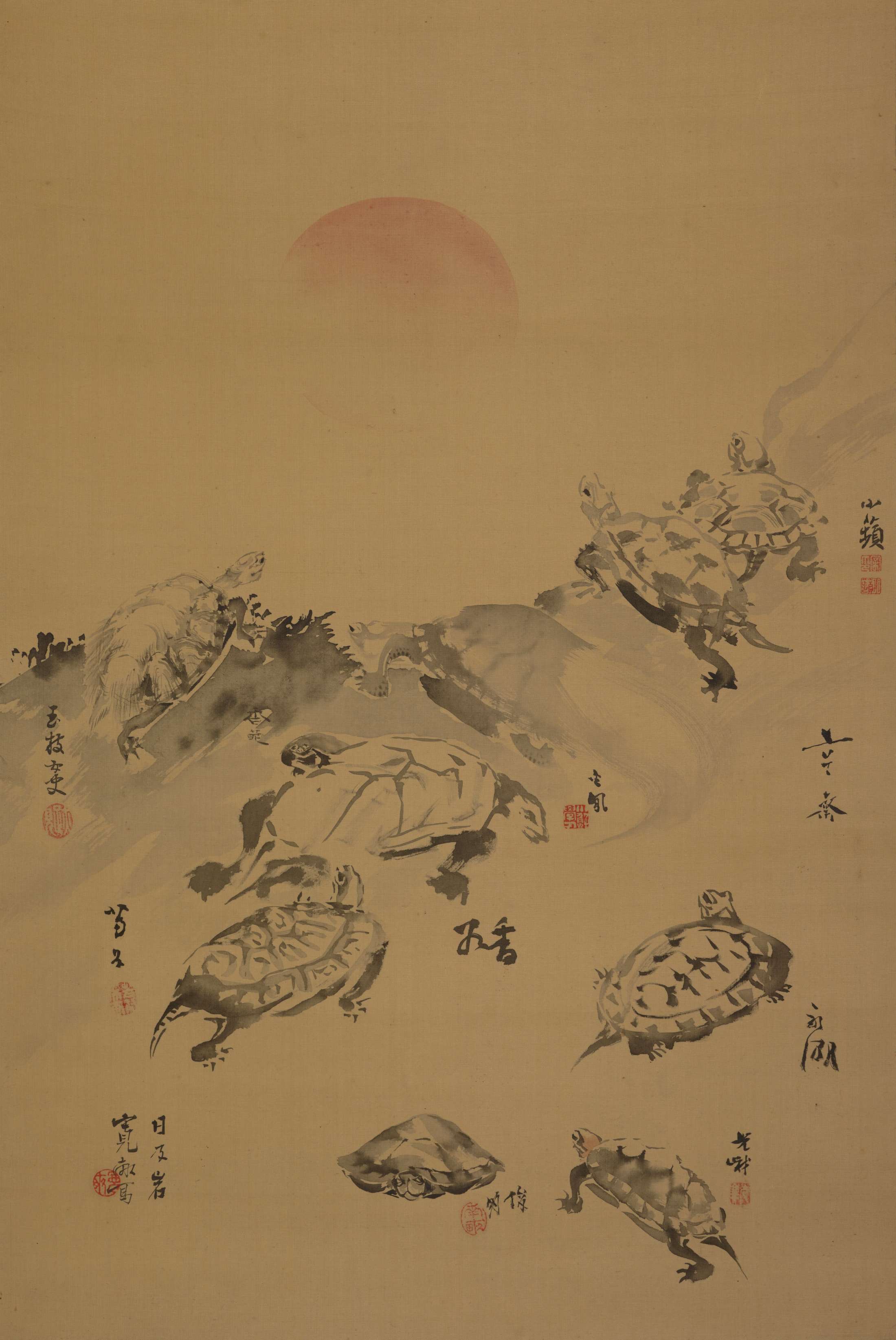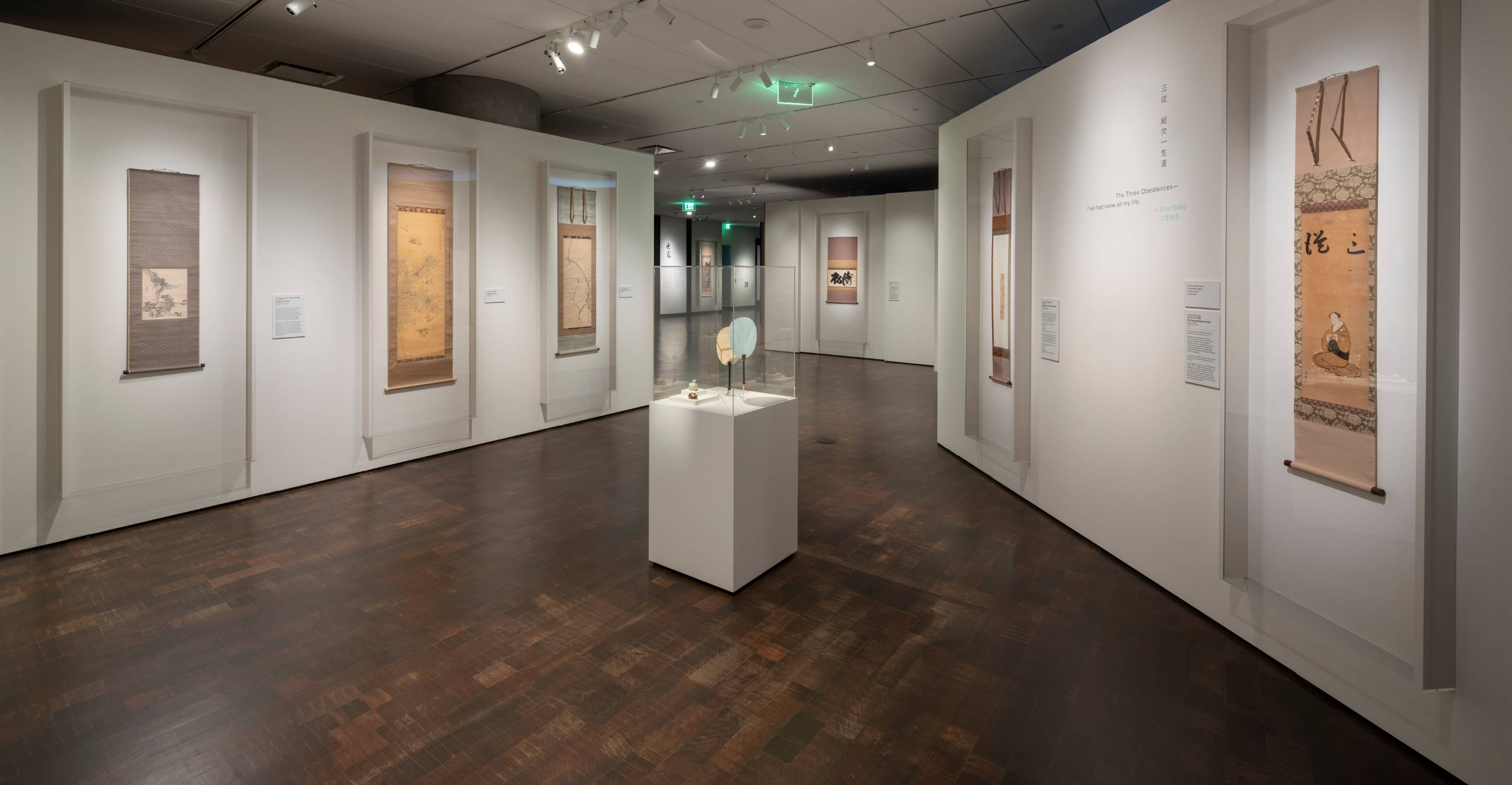Narratives of Japanese Art History: Where Are the Women?
- Paul Berry
On the occasion of Her Brush: Japanese Women Artists from the Fong-Johnstone Collection, it is appropriate to consider several aspects of the appearance of women as artists in the histories of Japanese art, especially since exhibitions such as this are still rare. Since the 1970s, the study of the art produced by women in Japan has gradually increased, with a variety of articles, dissertations, books, and exhibitions on one or another artist or theme. While the admirable persistence of scholars, curators, and critics has created foundational projects that are the necessary prelude to further developments, it also seems that their total impact on society, museum exhibitions, and popular media presentations of art, while noticeable, remains limited. Although the following topics can only be addressed briefly in this abbreviated essay, these considerations are useful to keep in mind when viewing the works on display.
Numbers of Recorded Artists
The largest dictionary of Japanese painters and calligraphers, Dai Nihon shoga meika taikan (1934), encompasses all periods through the Taishō era (1912–1926).1 Its 2,792 pages of biographical entries cover approximately 16,000 artists, of which roughly 600 are women, just under four percent. Despite the large number listed, there are many not found in this selection. Examining regional histories uncovers more artists, and from the Meiji and Taishō eras, lists of the members of the studio groups (juku) formed by prominent artists reveal many additional women. Yet most of them sank into relative obscurity after their deaths. Their elision from later histories made the profile of women active in the arts even harder to discern.
Gender Roles in Relation to Themes and Styles
Gendered categories have long pervaded the production and reception of Japanese art. Speaking in the broadest of generalizations, paintings and techniques perceived as “delicate” or “genteel” rather than bold are often considered “feminine” (joseiteki). Traditional themes drawn from Japanese, as opposed to Chinese, culture were deemed most appropriate for women. The assumption that women making figure paintings should paint other women rather than men lasted into the 1930s. Paintings and calligraphy by women have often been praised for their “femininity,” leaving the definition of what that may be up to the viewer. Closer examination reveals male artists employing many of the same themes and delicate brushwork that are acclaimed as being “feminine” when executed by a woman. Women as a class have a range of experiences different from their male counterparts, yet much of the differences in style and subject matter can more easily relate to the training they received and the general expectations placed on their work. Women either trained in or electing to study “masculine” brushwork associated with Zen, Kanō school renditions of Chinese themes, or Chinese-referenced literati landscapes and poetry rivaled their male counterpoints in quality.
Challenges for Enacting Change
Among the many obstacles to making substantial progress in the understanding and appreciation of the arts of women in Japan is the global tendency for almost any topic associated with “women” to become a “women’s issue” that is unthinkingly taken to mean of concern to women rather than to “society at large.” In this context, “society at large” functions as a coded expression representing the “world of men.” As a result of this unreflective attitude in the academic and museum worlds, the vast majority of studies on the artwork of women in Japan have been done by women with only the occasional contribution by men. For a large-scale change in the study of the subject, the notion that it is somehow a subcategory of the larger art world needs to be revised. Only when the study of the art of women moves to the center of the study of art, due to its significance for the impact of gender in all artworks, will new and deeper investigations into the nature of art and society be possible.
Watch Paul Berry's Symposium Presentation
-
Araki Tadashi, Dai Nihon shoga meika taikan. 4 vols. (Tokyo: Dai Nihon Shoga Meika Taikan Kankōkai, 1934). There are various later reprints. ↩︎


